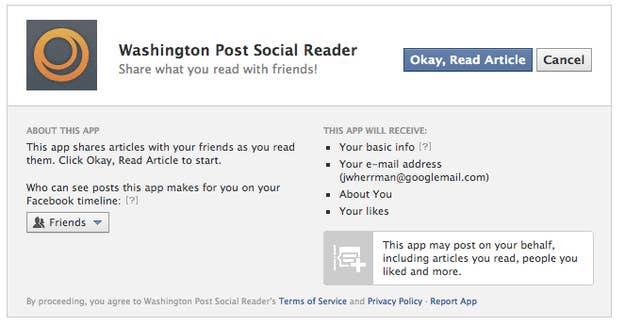
After a precipitous drop-off in user activity back in May, many social reader apps, which "frictionlessly" share users activity on Facebook, have been settling down at new, lower baselines of activity. The initial drop was largely the result of a change in the way Facebook displayed social reader stories, which collapsed stories into a smaller, cycling module (the first social readers spit long lists of stories onto users' walls, which was both clumsy and widely reviled).
This week, we're seeing some evidence that the pendulum is swinging back in publishers' favor. While the most popular Open Graph apps, such as SocialCam, Words With Friends and Spotify, are either holding steady, growing, or moving in seemingly unconnected ways (here's the data for SocialCam, for example), traditional news organizations' social readers are spiking dramatically:
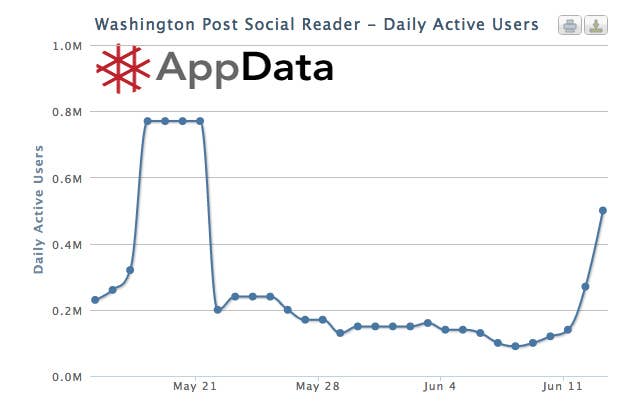
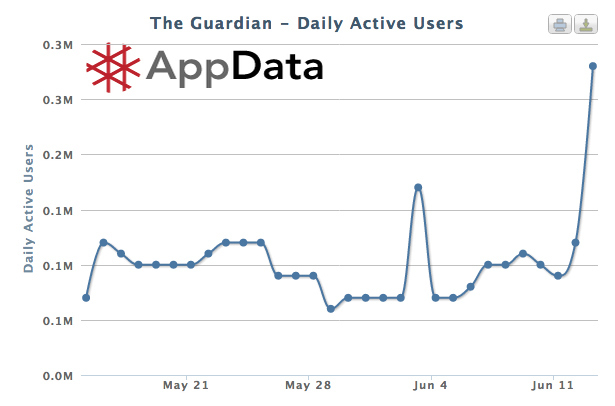
At an NYU Media Talk panel this week, Rob Malda, Chief Strategist and Editor-at-Large at The Washington Post’s WaPo Labs and founder of Slashdot, acknowledged the readers' fall-off last month but implied a recovery: "[Facebook] twiddled one knob, then they twiddled it the other direction." Others have ventured so far as to call it a comeback.
The most likely explanation for this recent spike is yet another Facebook redesign: In late May, InsideFacebook wrote about a new Trending Videos feature as well as a subtle, but possibly influential, change to the Trending Stories module. Now it's more like a carousel, and less like a slideshow.
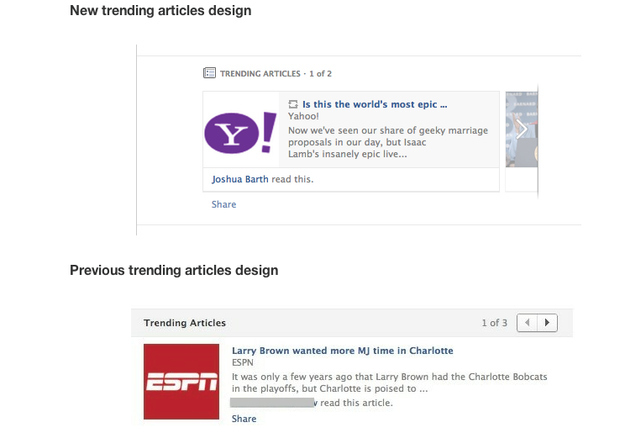
If this is a turnaround, though, we're near the beginning with a long way to go. User numbers for these two organizations' social apps are still far below their peaks. For example, before the first collapse the WaPo social reader was, according to AppData.com, near 18 million monthly active users. As of today, the site puts it at fewer than five million. In terms of monthly active users, this is about as low as the app has ever been; a longer historical chart, snapped by Cristina Cordova and highlighted by Peter Kafka, shows that the app has been below six million since mid-May.
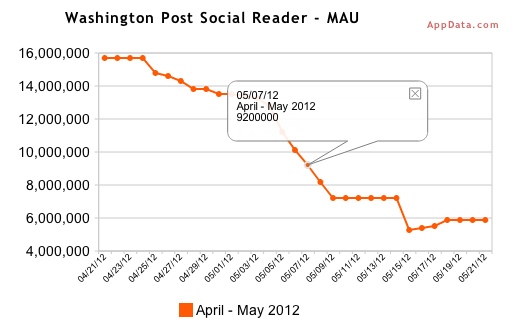
This, to borrow Malda's terminology, feels more like "knob twiddling" than anything else — even in our charts' short windows, we can see other recent spikes (though the mid-May plateau in the WaPo chart is likely a reporting error on AppData's part). In regards to the surge, a Facebook spokesperson told BuzzFeed FWD, "As with any new category of app on Facebook, we expect fluctuations to continue as the product experience evolves. These tests are ongoing and we have no specific details to share."
One caveat, however: Facebook app user numbers aren't necessarily correlated to the traffic they drive to their parent sites. Changes in app behavior can change user numbers; equally, they can change the efficacy of the apps with regard to making people read stuff. I reached out to Malda to ask about secondary app metrics. He referred me to WaPo public relations — I'll update if I hear back.
The real takeaway here is that Facebook has an enormous amount of control over publications' success. To Facebook, these changes are mere optimizations of one of many features; to the media organizations betting on social readers, they're powerful, and totally unpredictable, determiners of fate.
UPDATE: From WaPo's chief digital officer, Vijay Ravindran:
A few indicators of our success are the lifetime installations (over 26 million) and the syndication network we've built (over 70 partners). We continue to have an experimental attitude towards Social Reader and are especially interested in what it could teach us across our media properties.
Additionally, Social Reader's younger, more international users are making this endeavor an audience enhancer rather than a competitive product to our own sites.
